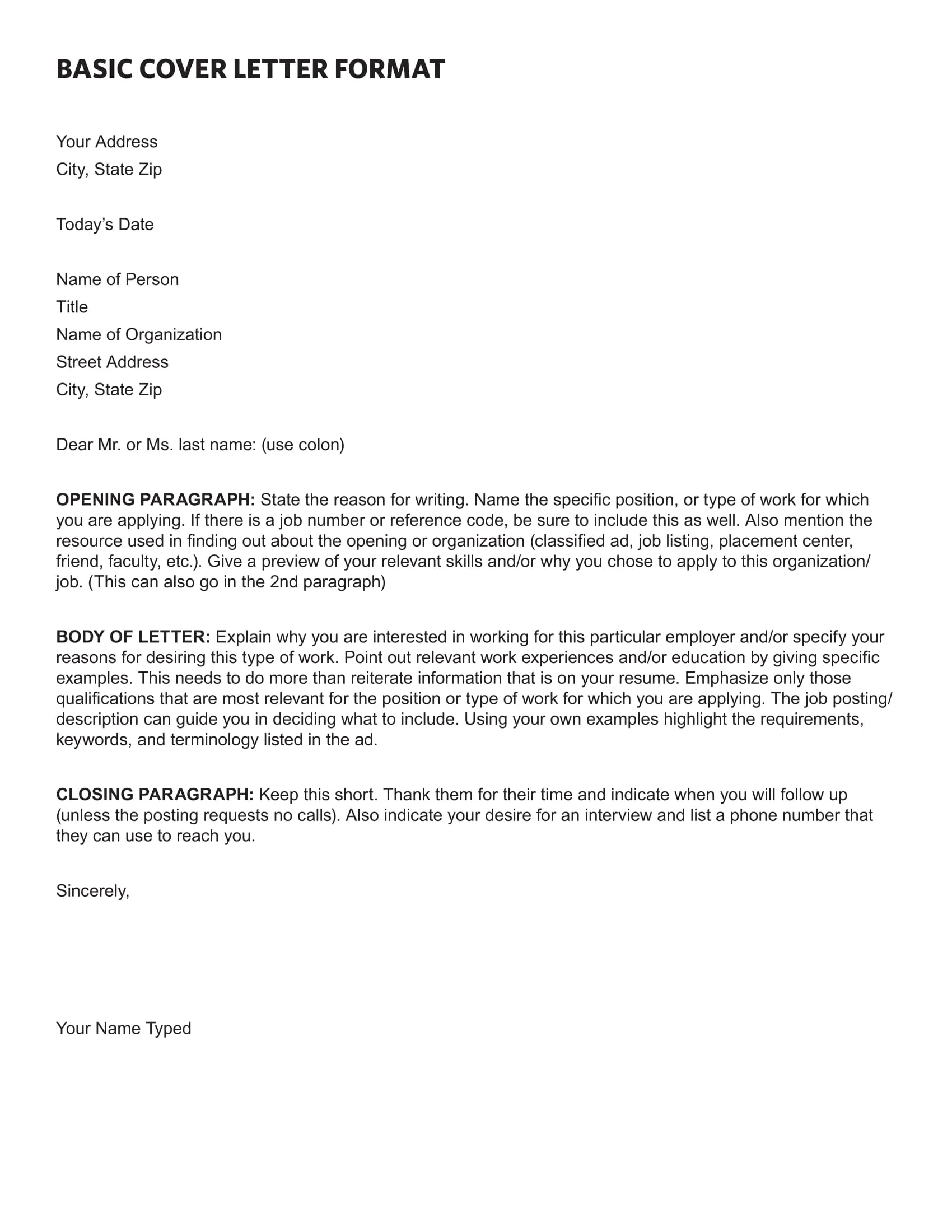What is a Cover Letter and Why Do You Need One
A cover letter is a crucial document that accompanies your resume when applying for a job. It serves as an introduction, allowing you to highlight your qualifications, skills, and experiences in a way that is tailored to the specific position and company you are applying for. Unlike your resume, which provides a factual overview of your professional history, a cover letter gives you the opportunity to showcase your personality, express your enthusiasm for the role, and explain why you are the perfect fit. In today’s competitive job market, a well-written cover letter can significantly increase your chances of landing an interview.
Think of it as your first chance to make a strong impression. It allows you to tell a story about yourself that the resume alone cannot convey. It’s a chance to explain any gaps in your employment history, demonstrate your understanding of the company’s needs, and express your genuine interest in the position. Without a compelling cover letter, your application may be overlooked, regardless of how impressive your resume might be. Furthermore, many employers consider a cover letter as an indicator of your writing skills and attention to detail. A poorly written or generic cover letter can immediately disqualify you from consideration.
Key Components of a Winning Cover Letter
A winning cover letter is not just a summary of your resume; it’s a carefully crafted document designed to captivate the hiring manager and make them want to learn more about you. It needs to be professional, well-organized, and tailored to the specific job. Each element plays a vital role in conveying your qualifications and enthusiasm.
Your Contact Information and the Date
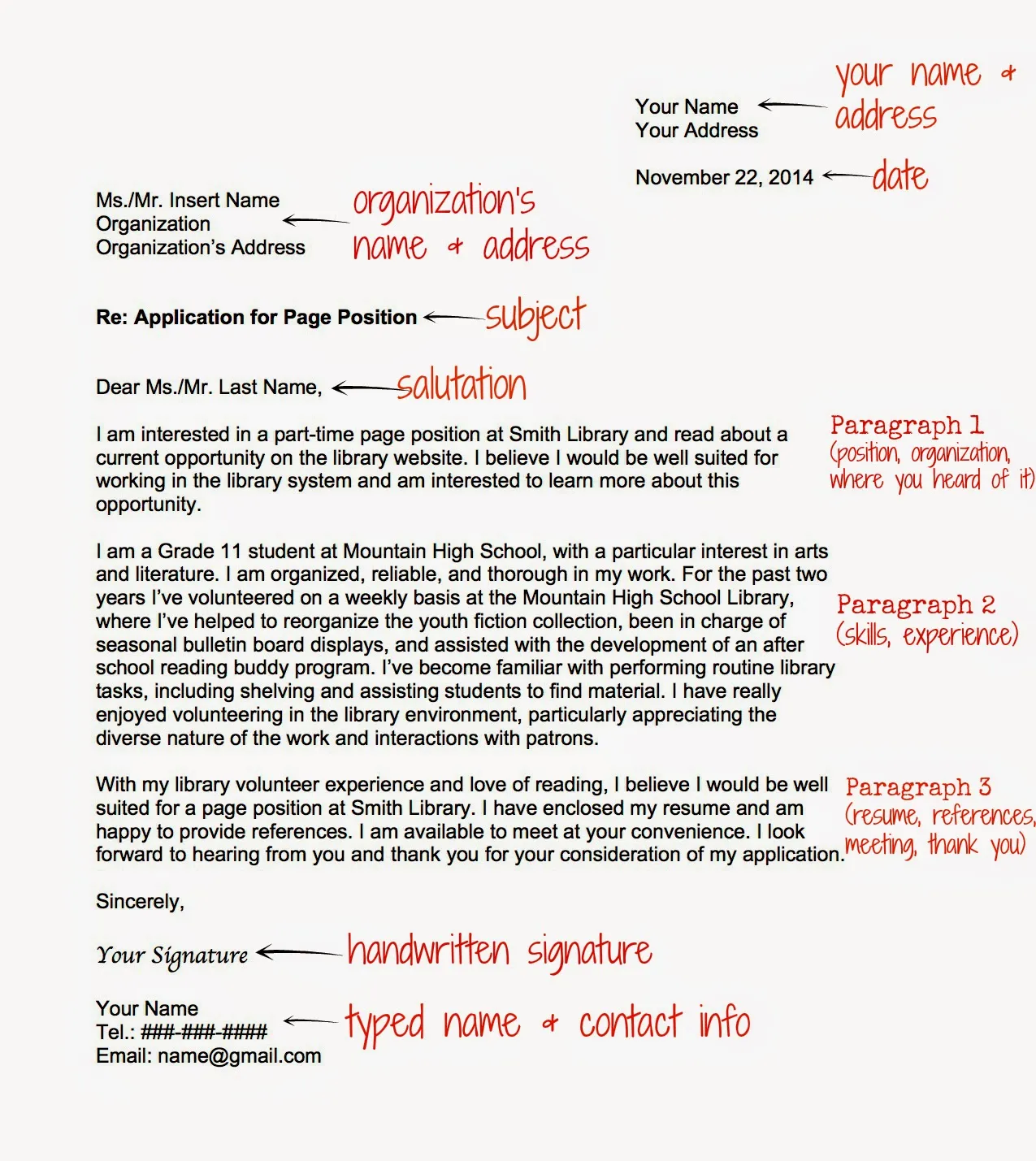
Begin your cover letter with your contact information, including your full name, address, phone number, and email address. This should be placed at the top left or right corner of the page. Below your contact information, include the date. Ensure the date is formatted correctly and is the current date or the date you are submitting the application. This section is essential for the hiring manager to easily contact you.
The Hiring Manager’s Contact Information
If possible, address your cover letter to a specific person by name. Research the hiring manager’s name and title, and include it in the upper left corner, just above the salutation. This shows you’ve taken the time to personalize your application. Use the correct title (Mr., Ms., Dr., etc.) and double-check the spelling of their name. If you can’t find a specific name, you can use a general greeting like ‘Dear Hiring Manager’.
Crafting a Compelling Salutation
The salutation sets the tone for your letter. If you know the hiring manager’s name, use ‘Dear Mr./Ms./Dr. [Last Name]’. If you don’t know the name, a professional alternative is ‘Dear Hiring Manager’. Avoid overly casual greetings like ‘Hi’ or ‘Hello’. A well-crafted salutation demonstrates respect and attention to detail, which are crucial aspects of professional communication.
The Opening Paragraph Make a Strong First Impression
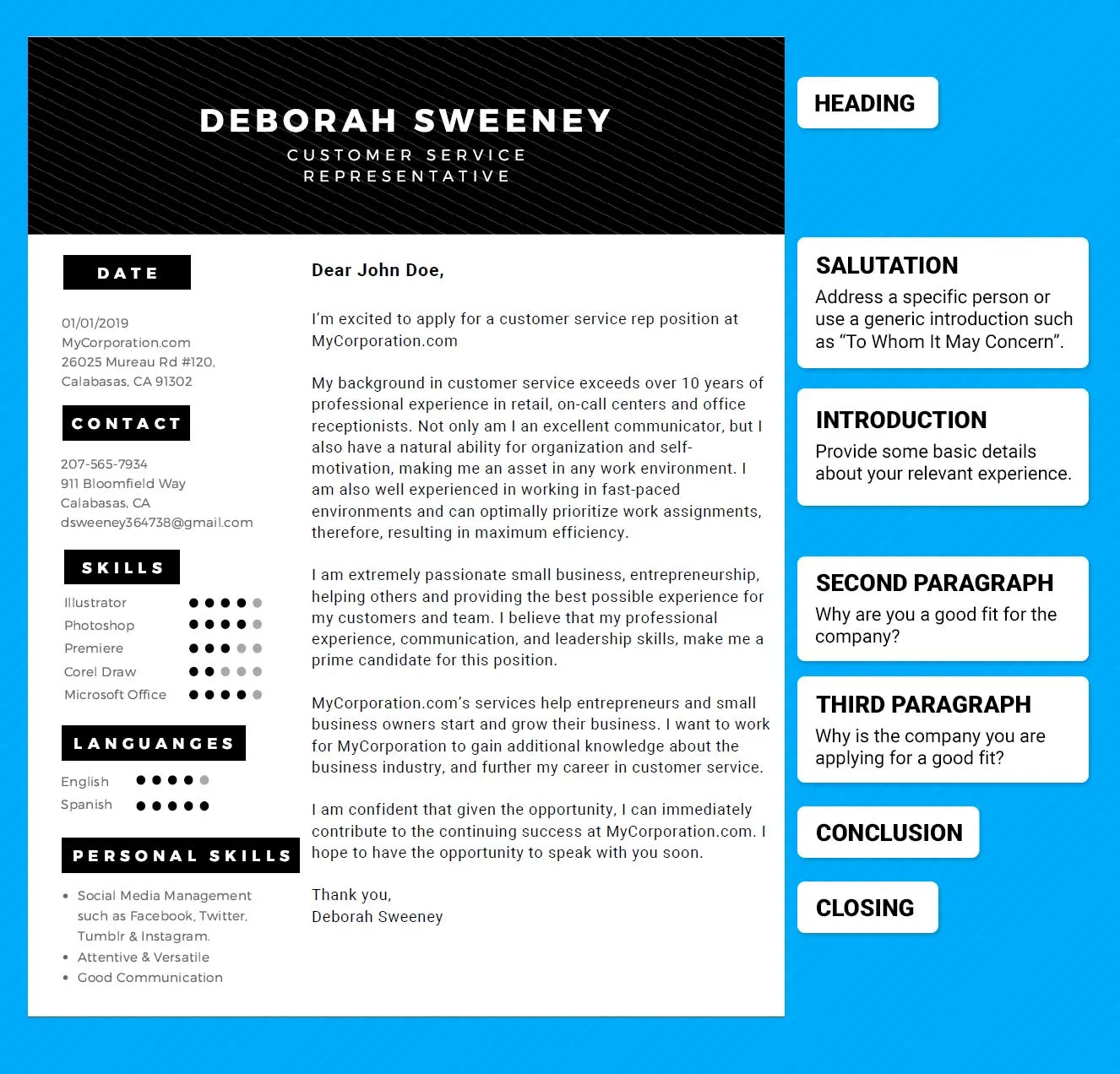
The opening paragraph is your chance to grab the reader’s attention. Start with a strong statement about why you’re writing and the specific position you are applying for. Briefly mention where you saw the job posting. State your most relevant skill or achievement that aligns with the job requirements. Clearly express your enthusiasm for the role and the company. The goal is to make the hiring manager want to read the rest of your letter.
Highlighting Your Skills and Experience
The body of your cover letter is where you highlight your skills and experiences and demonstrate how they align with the job requirements. Use the job description as a guide to identify the key skills and qualifications the employer is seeking. Provide specific examples of how you have used those skills in previous roles. Show, don’t just tell. Back up your claims with quantifiable achievements and examples. Focus on the most relevant experiences, and tailor your letter to match the specific needs of the position.
Showcasing Relevant Achievements
Instead of simply listing your responsibilities, emphasize your achievements. What results did you achieve in your previous roles? How did you contribute to the success of your previous employers? Use the STAR method (Situation, Task, Action, Result) to structure your examples. This helps you provide a clear and concise narrative of your accomplishments. Use action verbs to describe your accomplishments and focus on the impact you made.
Quantifying Your Accomplishments
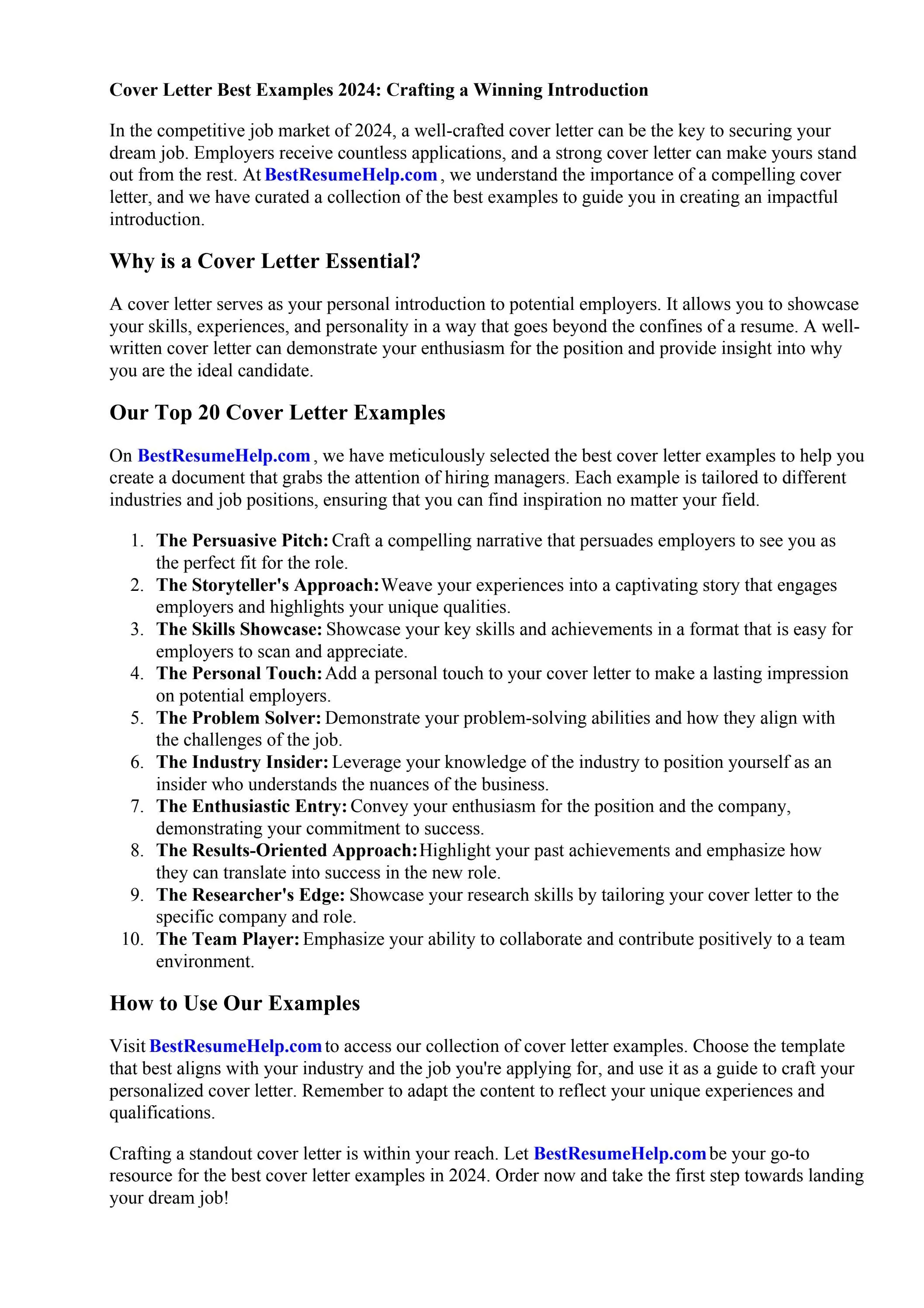
Whenever possible, quantify your accomplishments to demonstrate your impact. Use numbers, percentages, and data to illustrate your achievements. For example, instead of saying ‘Improved customer satisfaction,’ say ‘Increased customer satisfaction scores by 15%’. Quantifiable results add credibility and demonstrate the value you can bring to the new role. Make sure your numbers are accurate and support your claims.
Tailoring Your Letter to the Job
Avoid using a generic cover letter for every job application. Customize each letter to match the specific requirements of the position and the values of the company. Research the company and the role to understand what the employer is looking for. Highlight the skills and experiences that are most relevant to the job. Show how your qualifications align with their needs. This demonstrates that you are genuinely interested in the position and have taken the time to understand the company’s goals.
Closing the Cover Letter with a Call to Action
End your cover letter with a clear call to action. Express your interest in an interview and state your availability. Provide your contact information again, and thank the hiring manager for their time and consideration. Make it easy for them to take the next step. A strong closing paragraph reinforces your enthusiasm and encourages the employer to contact you.
Expressing Gratitude and a Professional Sign-off
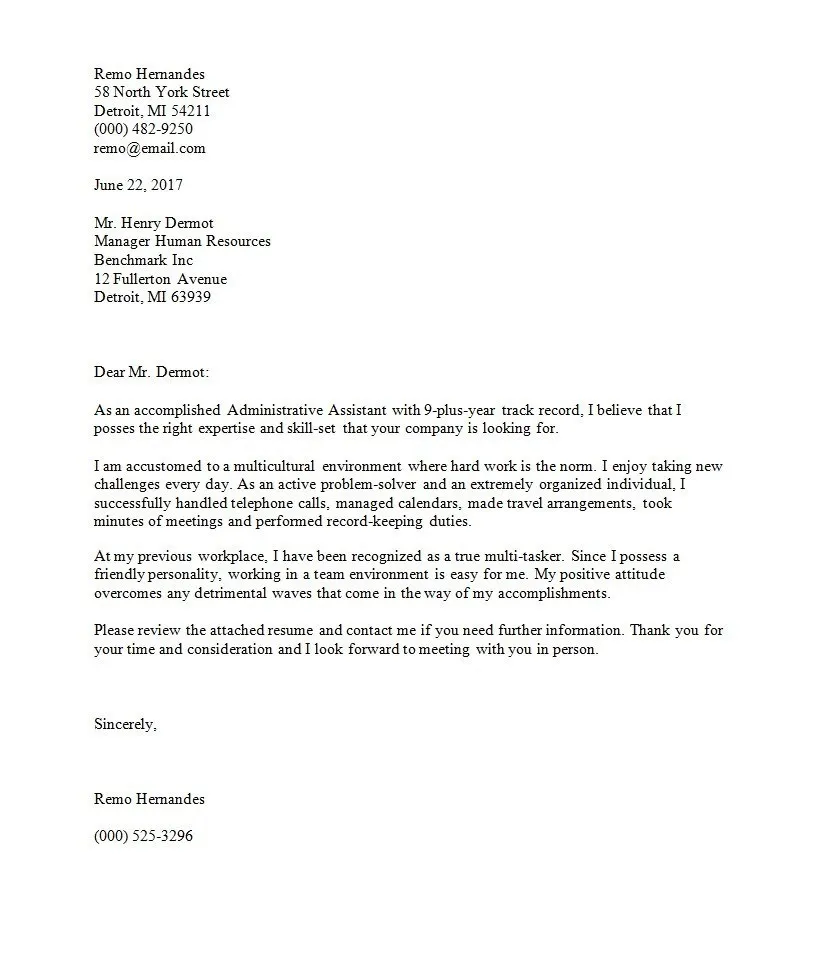
Close your letter by expressing your gratitude for the hiring manager’s time and consideration. A simple ‘Thank you for your time and consideration’ is appropriate. Use a professional sign-off such as ‘Sincerely,’ ‘Best regards,’ or ‘Yours sincerely’. Then, type your full name below the sign-off. If you are submitting a physical copy, leave space for your signature above your typed name. This adds a professional touch.
Proofreading and Formatting Your Cover Letter
Before submitting your cover letter, carefully proofread it for any grammatical errors, spelling mistakes, or typos. These errors can undermine your credibility. Use a grammar checker and ask a friend or family member to review it as well. Pay attention to the format and ensure it is easy to read. Use a professional font like Times New Roman, Arial, or Calibri, and maintain consistent formatting throughout the document.
Common Cover Letter Mistakes to Avoid
Avoid these common cover letter mistakes. Don’t use generic, impersonal language. Tailor each letter to the specific job. Don’t simply repeat your resume; expand on your experiences. Avoid typos and grammatical errors by proofreading carefully. Do not include irrelevant information. Keep the letter concise and focused. Don’t use slang or informal language. Avoid negative statements about previous employers.
Using Action Verbs to Enhance Your Letter

Action verbs make your cover letter more dynamic and engaging. Start your sentences with strong action verbs to describe your accomplishments and responsibilities. Examples include: ‘Managed,’ ‘Led,’ ‘Developed,’ ‘Implemented,’ ‘Achieved,’ and ‘Improved.’ Using action verbs helps you convey your contributions clearly and concisely, making a more impactful impression on the hiring manager.
Formatting Tips for Readability
Use a clear and professional font, such as Times New Roman, Arial, or Calibri. Keep the font size between 10 and 12 points. Use single-line spacing and add a blank line between paragraphs for improved readability. Use left-alignment with a standard margin. Ensure your cover letter is no more than one page long. A well-formatted letter is easy to read and makes a positive impression.
Cover Letter Examples for Different Industries
Cover letters vary depending on the industry and the specific role. Research examples for your field. Tailor your letter to the norms and expectations of the industry you are applying to. For example, a cover letter for a creative role may have a more visually appealing design and a slightly more informal tone, while a cover letter for a legal position should be strictly professional and formal. Use these examples as a guide, but make sure to customize them to reflect your unique skills and experiences.
Cover Letter Template to Get Started
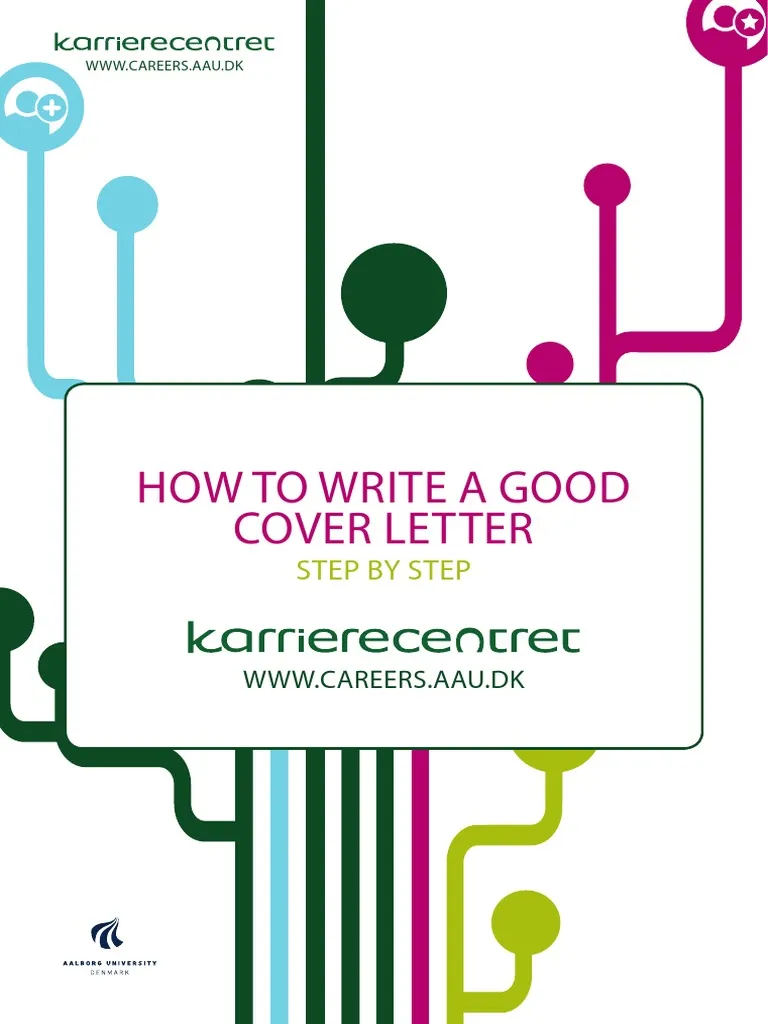
Here is a basic template that can be adapted. Remember to replace the bracketed information with your specific details. [Your Name] [Your Address] [Your Phone Number] [Your Email] [Date] [Hiring Manager Name] [Hiring Manager Title] [Company Name] [Company Address] Dear [Mr./Ms./Mx. Last Name], I am writing to express my interest in the [Job Title] position at [Company Name], as advertised on [Platform where you saw the ad]. In my previous role at [Previous Company], I was responsible for [briefly describe a relevant responsibility]. I am eager to bring my skills and experience to [Company Name] and believe I can make a significant contribution to your team. Thank you for your time and consideration. Sincerely, [Your Typed Name]
A well-crafted cover letter can significantly increase your chances of securing an interview. By following these guidelines and tailoring your letter to each job application, you can create a compelling document that highlights your skills, experiences, and enthusiasm, ultimately helping you land your dream job.
